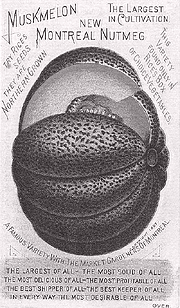
The Village of Notre-Dame-de-Grace
In the 1860s the Catholic Diocese of Montreal decentralized its power,
giving authority to local parishes to perform duties related to the administration
of their districts which had been previously reserved by the central Parish
of Montreal based in the Notre Dame Cathedral. In 1867 the Eglise Notre
Dame de Grace received it's new mandate. Following this development was
the passing of a provincial law that allowed such parishes to incorporate
into separate towns. As a result the Village of Notre Dame de Grace was
formed on December 28, 1876. The village was divided into three areas:
Saint Luc, St Pierre and Notre Dame. The borders of the new village
were ringed by Cote des Neiges and St. Laurent parishes to the north and
east and Lachine and Cote St. Paul to the south and west. In 1877 the first
mayor to be elected was Jérémie-Daniel Decarie, and the following year
the new village was linked by horse-drawn tram to Montreal for the first
time. By 1894 horsepower was replaced by electric streetcars. Map
of NDG in 1879
The Town of Notre-Dame-de-Grace
Development of the Montreal region to the east was progressing quickly
and NDG residents witnessed the arrival of the Grand Trunk Railroad in
1855 followed by the Canadian Pacific Railroad in 1886. In
1893 two partitions within the village became seperate entirties when
the
Villages of St. Pierre and Montreal West were formed from the
southwestern
parts of NDG. The sigle most important transportation development began
in 1896 when the Montreal Park & Island Railroad began developing a
tramway line from Lachine to downtown trough NDG. By 1900 the line was
providing regular service to passangers who used the line to avoid the
Lachine Canal transit, and as a result the Sherbrooke St. corridor
became a prime area for development. In 1903 Saint Luc, comprising the
northern tier became the
town of Cote St. Luc (which later divided again into Cote St Luc and
Hampstead).
Between 1901 and 1906 the population of NDG had doubled to 1,854 and
the
village became a town on March 9, 1906. The newly incorporated town was
sub-divided into St. Pierre, Turcot, Mount Royal Vale and Notre Dame
wards.
Development and Annexation
By 1900 the Montreal city core had expanded north to the mountain and
began to spread both east and west. The need for more space was clear
and
land holding companies began looking for logical places for that
expansion
to take place. In NDG large parcels of the land were
acquired
by the Kensington Land Development Company. A grid of suburban streets
was conceived and in conjunction with their unofficial partners, the
Montreal
Tramway Corporation and Montreal Light Heat and Power (who
had received a 30 year tax-free development deal in December 1892) the orchards
and melon farms of NDG
began to give way
to suburban streets. In 1903 the town celebrated its 50th anniversary,
but in an effort to be competitive
$400,000 was borrowed to begin to supply city services such as water
supply and sewage.
In 1907 the town contracted with the Montreal Park and Island Railway to
develop a grid of streetcar lines within NDG itself. All of this rapid
development ended up putting the town deeply in debt - $1,400,000
by 1910. In 1906 Thomas Trenholme (founder of Elmhurst Dairy and
Guaranteed Pure Milk) became mayor and favoured annexation by Westmount.
From 1907 until 1910 the town's council meetings were consumed with the
indebtedness, the various contracts being issued and the case for annexation.
Most of the arguments centred around the street railway contracts
which would benefit certain landholders. The Council itself was
largely in favour of joining Westmount, but many of the landowning
citizens preferred Montreal and at one point it even seemed that
the eastern part of the town would secede and join Westmount on their
own. In 1908 Westmount voted against annexing NDG, however, and the
town was left with no alternative, and was annexed instead
by
Montreal in 1910. Photo of Benny Farm, c. 1900
Area Schools
The city's central school boards also started looking at NDG in interest
as both population and tax revenue potential grew in the area. NDG initially
came under the jurisdiction Coteau St-Pierre School Comissioners(CSPSC)
who were responsible for west end schools. With the annexation of NDG by
the city, the question arose as to which school commission would control
the district. In a Solomon-like decision the provincial government split
the region into two, awarding the eastern half of the protestant population
in 1916 to the Protestant Board of School Commissioners (PBSC) which controlled
the schools of central Montreal. As a result the Coteau St. Pierre School
Commission built an elementary school (Kensington) and a high school (West
Hill) in the western half to alleviate pressure on the other CSPSC schools.
The pressure was particularly felt in Montreal West where the first
high school had been built in 1894 as Aberdeen Model School. This school,
rebuilt in 1931 as Montreal West High School and later known as Royal West
Academy, was the only senior school in the area until the addition of West
Hill High in 1918/19. On July 1st 1921 the provincial government
struck again, and awarded the balance of the NDG district, including the
two new schools, to the PBSC .
Revised January 13 2012